- Home
- Japanese Numbers
- Japanese Age
Learn How to Say Age in Japanese
Using Japanese Numbers
There are two ways on how to say age in Japanese using Japanese numbers.
They are differentiated by 音読み (onyomi) and 訓読み (kunyomi) readings.
For 音読み (onyomi) reading, all you need to do is to append the word 歳 (sai) to the number and you will get the age.
Whereas for 訓読み (kunyomi) reading, follow the special numbers you have learned in various counters of Japanese.
For example to ask a person's age in 音読み (onyomi), you will say...
- 何歳ですか (nan sai de su ka)
whereas in 訓読み (kunyomi), you will say...
- おいくつですか (o i ku tsu de su ka)
The hiragana "お" (o) is added to make the sentence more polite.
Japanese Age Counter using 音読み (onyomi)
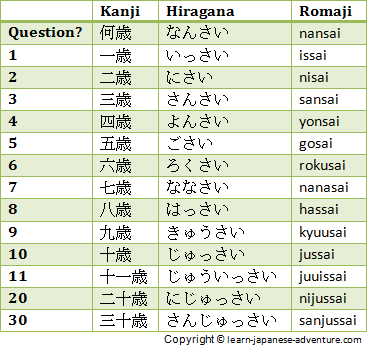 Japanese Age Counter Using onyomi
Japanese Age Counter Using onyomiThe table above shows the Japanese age counters using 音読み (onyomi). You just need to append さい (sai) to the number to get the respective age.
Note that because the kanji 歳 (sai) is too difficult to write, sometimes another kanji 才 (sai) is used instead.
Take note that ages like 1, 8, 10, 20, 30 and all the ages in the tens have to be pronounced differently, the same as you have seen for different pronunciations in various counters in Japanese.
Japanese Age Counter using 訓読み (kunyomi)
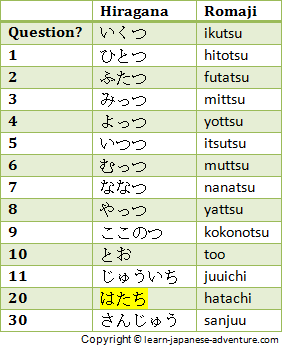 Japanese Age Counter Using kunyomi
Japanese Age Counter Using kunyomiThe table above shows the Japanese age counters using 訓読み (kunyomi).
As you can see they are the same as the special numbers mentioned in Japanese Counters, except for twenty years old which is pronounced as はたち (hatachi).
Ready Set Speak Sale! Get 40% OFF Forever on Premium & Premium PLUS plans! Ends on 18 Apr 2025
The link above is an affiliate link, which means that I would earn a commission (at no extra cost to you) if you do end up purchasing the related learning course.
Buy me a coffee


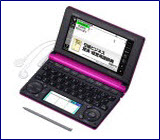
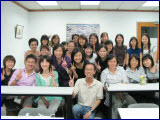



Facebook Comments
Don’t see the comments box? Log in to your Facebook account, give Facebook consent, then return to this page and refresh it.